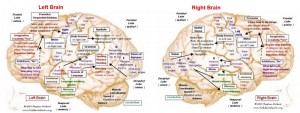So I’m watching something on TV, I don’t remember what, because I don’t do a lot of it, and pretty much every commercial break there’s an ad for Lumosity – “using the science of neuroplasticity!” This drives me nuts, because not only does it not work (more on that later) but it promulgates a failed understanding of what neuroplasticity is and what are its potentials and limitations.
Category Archives: General
Wednesday Links
Some of these are actually old, but I’ll bet they’re new to you! Most bloggers put up regular link pages on Fridays or Saturdays, some will go for Sundays or Mondays. I procrastinate, so I pick Wednesday. These will be individual articles, not the massive collections of information I put up earlier this week. Eventually there will be stuff besides science, but right now I’m on a roll because I lost my regular outlet. However, I will try to keep up with cute otter news.
SCIENCE!!!
The Great and Powerful (Dr.) Oz, dissected inThe New Yorker. Orac tells us exactly why we need to stop listening to Doctor Oz.
Seeking Common Ground in the Syndromes of Autism Where does the genetic predisposition for autism lie?
Robustness and fragility in neural development In fact, where do the genetics for any neurological differences lie?
NIH study advances understanding of movement control “Voluntary movements involve the coordinated activation of two brain pathways that connect parts of deep brain structures called the basal ganglia, according to a study in mice by researchers at the National Institute on Alcohol Abuse and Alcoholism (NIAAA), part of the National Institutes of Health. The findings, which challenge the classical view of basal ganglia function, were published online in Nature on Jan. 23.”
Neuroskeptic tells us How To Respond to Criticism and does a pretty darned good job of it.
If you try one detox this year, make it this one Detox your brain!
Emily Willingham gives us 10 Questions To Distinguish Real From Fake Science and they are all very good ones.
No link roundup would be complete without. . .OTTERZ!!!
Brain Function, Brain Anatomy Linky Goodness!
Do you want to understand the structure and function of your brain? Are you curious about how brain anatomy affects behavior and thinking? I have some good sites for you!

If you have to start somewhere, this site, The Brain from Top to Bottom is a great place. Not only is it indexed based on brain function, but you can select from three levels of understanding, based on your current knowledge of brain anatomy and functions.
UNDERSTANDING HOW THE BRAIN WORKS Written by Glen Johnson, a Clinical Neuropsychologist, this is a pretty understandable general overview.
MyBrainNotes™.com was written by Sarah-Neena Koch as a way to understand the structures of the brain and brain functions for a novel she was writing. The end result is pretty impressive – it’s pretty comprehensive while also being comprehensible. You should be able to understand it, and there are lots of embedded links.
Chapter Two of “Psychology, an Introduction” by Russ Dewey: The Human Nervous System has some description of brain anatomy and functions, and also covers certain deficiencies that result from brain injuries or hereditary differences. Again, more basic, because it’s not written for neurologists.
Patrick McCaffrey has an online syllabus and course supplements for a class on Neuroanatomy of Speech, Swallowing and Language and an equally informative set of pages on Neuropathologies of Language and Cognition
Anatomy of the Brain from The Mayfield Clinic is designed for patient education, and has illustrations to make the information more understandable.
Keith A. Johnson, M.D. and J. Alex Becker, Ph.D. from Harvard compiled The Whole Brain Atlas which takes a more neuroanatomical view with a focus on specific injuries and diseases.
The Allen Brain Atlas is “A growing collection of online public resources integrating extensive gene expression and neuroanatomical data, complete with a novel suite of search and viewing tools.”
“Welcome to Neuroscience Online, the Open-Access Neuroscience Electronic Textbook! This online, interactive courseware for the study of neuroscience is provided by the Department of Neurobiology and Anatomy at The University of Texas Medical School at Houston.”
